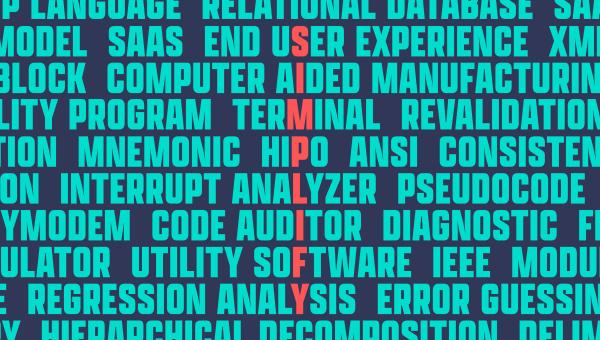Unlocking Results: Measuring the impact of Bite-Sized Learning on Performance
In the fast-paced world of modern workplaces,traditional learning methods often fall short in terms of engagement and knowledge retention. Enter bite-sized learning—an innovative approach to training that breaks complex topics into manageable, focused modules. But while microlearning is a popular buzzword, leaders are rightly asking: what is the real impact of bite-sized learning on performance? In this article, we’ll explore how to measure results, examine proven benefits, and share actionable strategies for integrating and evaluating bite-sized learning within your organization.
What is Bite-Sized Learning?
Bite-sized learning, also known as microlearning, is an educational strategy where data is delivered in small, focused chunks. Each lesson targets a specific goal, skill, or concept, typically taking less than ten minutes to complete. This structure supports:
- better knowledge retention
- Greater engagement
- On-demand, just-in-time learning
- Easy integration into busy work schedules
Popular delivery formats include short videos, quick-read articles, infographics, podcasts, and interactive quizzes—all accessible via desktop or mobile devices.
Why Measure the Impact of Bite-Sized Learning?
While enthusiasm for microlearning is high, demonstrating it’s impact on employee performance is crucial for justifying investment and continuous enhancement. Effective measurement enables organizations to:
- Link learning activities to key business outcomes
- Identify the most effective instructional formats and topics
- Enhance learner engagement and satisfaction
- Make data-driven decisions about future training initiatives
Simply put, measuring the impact of bite-sized learning makes it possible to unlock and replicate real workplace results.
How to Measure the impact: Key Strategies and metrics
Measuring microlearning effectiveness requires a blend of qualitative and quantitative methods. Here’s a step-by-step approach aligned with best practices in learning evaluation:
1. Define Clear Learning Objectives
Start by establishing what each bite-sized module is designed to achieve. Objectives should be:
- Specific and measurable (e.g., improve customer handling time by 10%)
- Linked to organizational goals
- communicated to learners
2. Monitor Engagement and Completion Rates
Track how employees interact with each module. Key metrics include:
- Completion Rates: Percentage of users finishing the course/module
- Time on Task: Time spent per lesson or activity
- Return Visits: How often learners revisit content
3.Assess Knowledge Retention and Skill Application
Use quizzes, practical assignments, or simulations to evaluate how well learners absorb and apply new information.
- Pre- and post-training assessments
- scenario-based questions
- Real-world tasks or role-plays
4. measure Business Outcomes and Performance Improvements
Ultimately, tie learning to tangible performance metrics, such as:
- Sales growth or conversion rates
- Error or defect reduction
- Employee productivity or efficiency gains
- Customer satisfaction scores
5. Gather Learner Feedback and Qualitative Insights
Collect user feedback through surveys, focus groups, or one-on-one interviews to uncover insights on:
- Overall satisfaction with microlearning modules
- Perceived relevance and ease of use
- Suggestions for content improvement
Benefits of Bite-Sized Learning for Performance
Research and practice show that bite-sized learning brings measurable benefits to organizations seeking enhanced employee performance:
- Increased Retention: Short, focused lessons help employees remember and recall information more effectively.
- Higher Engagement: Learners are more likely to finish brief modules, resulting in better learning outcomes.
- Immediate Application: Bite-sized content supports just-in-time learning, enabling employees to quickly apply new skills on the job.
- flexibility: Employees can access content anytime and anywhere, fitting learning into their daily routines.
- Cost Efficiency: Short-format learning often requires fewer resources to produce and maintain.
Tip: Use a mix of multimedia formats (video,audio,text,interactive elements) to cater to different learning preferences and further boost engagement.
Real-World Case Study: Bite-Sized Learning in Action
To better understand how bite-sized learning drives results, let’s look at a real-world example:
A global e-commerce company faced declining customer satisfaction and inconsistent handling practices across its support team. To address thes challenges, the company broke down its existing two-day customer service course into 20 microlearning modules, each under 7 minutes.
- Engagement: Module completion rates jumped from 72% to 94%.
- Performance: First-contact resolution improved by 12% and support ticket handling time decreased by 17% within three months.
- Feedback: Employee surveys reported a 30% increase in confidence when addressing complex customer issues.
By reorganizing content into digestible chunks and emphasizing real-world scenarios, the company achieved measurable gains in both employee performance and customer satisfaction.
Practical Tips: Maximizing the Impact of Bite-Sized Learning
- Align content to job tasks: Focus each microlesson on a specific skill or need relevant to learners’ daily work.
- Leverage analytics: Use your learning management system (LMS) to track usage data and identify high-impact modules.
- Encourage knowledge sharing: Create discussion forums or peer communities around bite-sized modules to reinforce learning.
- Iterate based on feedback: Regularly update and improve content using user input and performance data.
- Celebrate achievements: Recognize learners who complete key microlearning tracks to foster motivation.
First-Hand Experience: Microlearning from a Learner’s Perspective
Many professionals find that bite-sized learning helps them absorb, retain, and apply knowledge more efficiently. For instance, a corporate salesperson shared:
”Short training videos on new products and soft skills made information much easier to remember.I could watch while commuting or between meetings, and tips from the videos directly helped me close deals faster.”
This firsthand feedback mirrors the experiences of many learners who appreciate the convenience and practical value of microlearning in their daily work lives.
Conclusion: Unlock the true Power of Bite-Sized Learning
Unlocking results with bite-sized learning is more than a trend—it’s an evidence-backed strategy for driving employee performance and business growth. By establishing clear objectives, using meaningful metrics, and continually adapting content, your organization can maximize the benefits of microlearning and demonstrate its real impact.
As digital learning continues to evolve, those who embrace measurement and innovation in their approach will create more agile, responsive, and successful teams. Start small,measure often,and scale what works—the results will speak for themselves.

